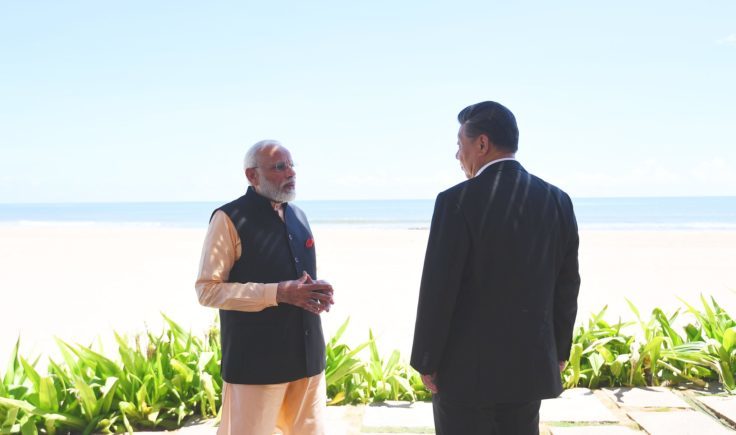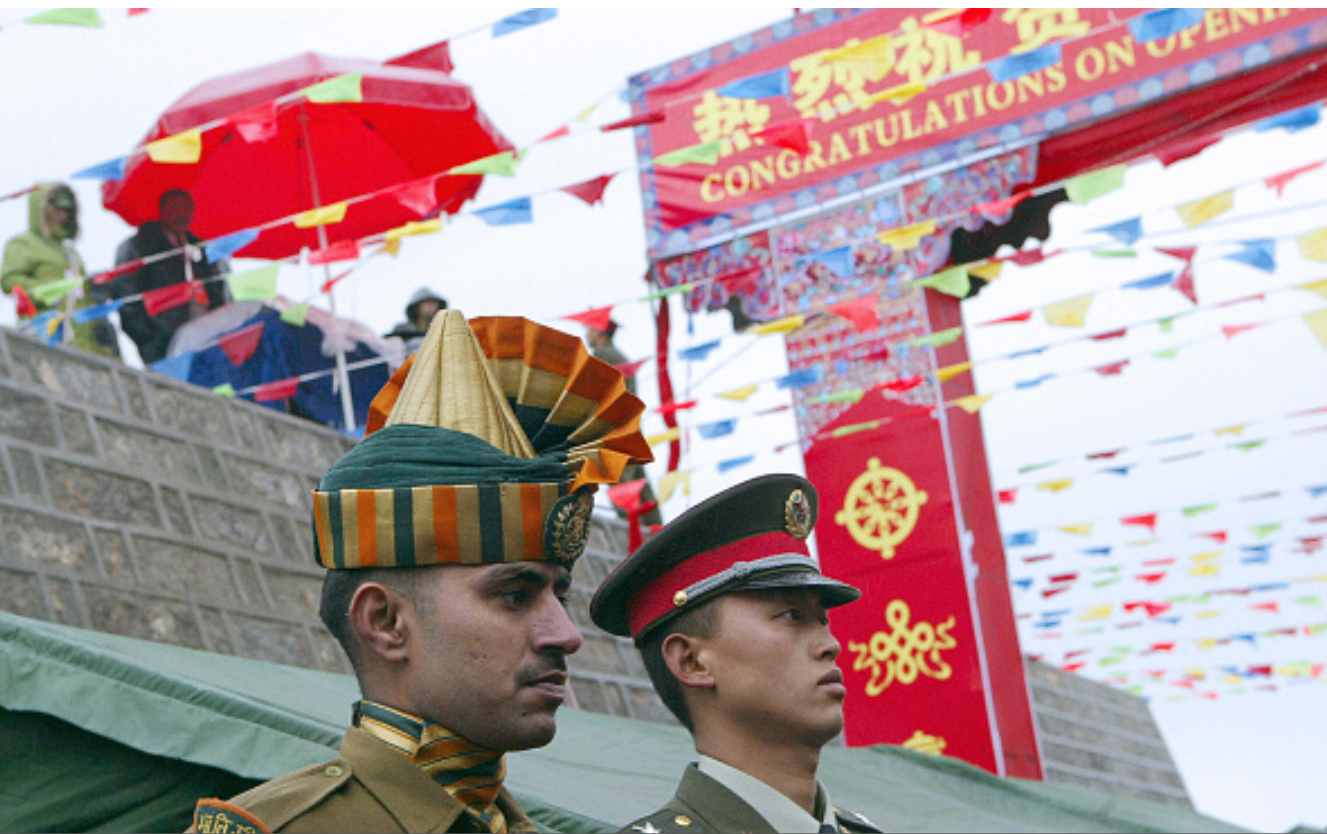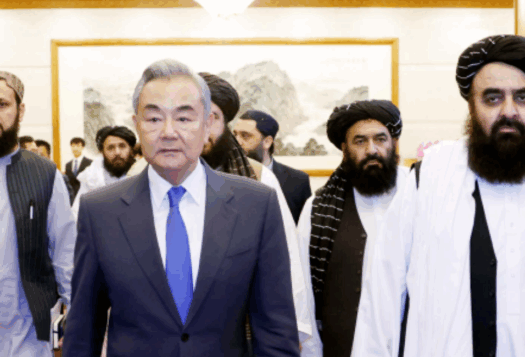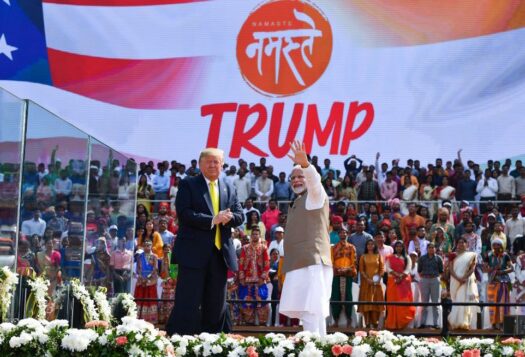
Even as the world remains engrossed in the fight against COVID-19, India and China observed the 70th anniversary of the establishment of their bilateral ties on April 1. This has indeed been an eventful decade for India-China relations, which began with the hope of realizing the “Asian Century” under the guidance of a new generation of leaders in New Delhi and Beijing. Yet it is ending on a somber note, underscoring the limitations of the relationship. As this author has written elsewhere, the pandemic has introduced new sources of tension in bilateral ties: Indian public sentiment critical of Beijing’s management of the pandemic, combined with controversies over “faulty” testing kits from China, New Delhi’s new Foreign Direct Investment (FDI) norms for states that border India, and the possibility of foreign investment relocating from China to India—all have the potential to sow greater discord in the relationship. The disputed border has once again become restive, indicating uncertainty in India-China relations in a post-COVID-19 world.
Against this backdrop, it is important to reflect on why the idea of Asian solidarity did not take root between the two giants throughout their 70-year relationship. Aside from structural issues such as the border dispute, disagreements over Tibet, and Indian concerns about the China-Pakistan relationship, mutual perceptions have also played a significant role in preventing the formation of a collective identity—based on solidarity and community—and instead made the relationship conflict-prone. These perceptions have largely been shaped by their imperial histories, personal and impressionistic accounts based on limited cross-cultural exchanges, and by each state’s policy imperatives, rather than by any thorough understanding of each other.
Aside from structural issues such as the border dispute, disagreements over Tibet, and Indian concerns about the China-Pakistan relationship, mutual perceptions have also played a significant role in preventing the formation of a collective identity—based on solidarity and community—and instead made the relationship conflict-prone.
Before India and China emerged as modern nation states in the late 1940s, they had already developed certain perceptions about each other. Indian discourse on China in the early 20th century was largely positive, often positioning China and India as “sister civilizations,” facing a common obstacle of imperialism, and sharing the aspiration of reviving their ancient civilization-states. In contrast, Chinese discourse on India during the same time period was exceptionally negative, often projecting India as a “lost country” (wangguo), which can be interpreted as a “failed” or “enslaved” nation that “lacks a national spirit”—a fate that late-Qing China was desperately trying to evade. China’s problematic impressions were also based on factors like India being the source of opium trade in their country, Indian regiments’ participation in the first Opium War of the mid-19th century, and presence of Sikh policemen in the British treaty ports in China.1
Many Indian nationalists, such as Jawaharlal Nehru, Rabindranath Tagore, and Mahatma Gandhi, developed an affinity towards China due to a deep sense of cultural oneness between the two civilizations; or perhaps, from the historical “Indianization of China,” such as through the Chinese adoption of Indian Buddhism. However, this Indianization of China generated polarized debates in the country during the days of the New Culture Movement and was often considered a central reason behind the nation’s falling behind the West.
For example, Chinese intellectuals publicly demonstrated their disdain for India during Indian Nobel Laureate Rabindranath Tagore’s visit to China in 1924. Tagore’s appeal to “revive and confederate the ancient cultures of ‘the East'” as an answer to the “materialistic West” faced “organized opposition” as many of China’s young intellectuals rejected his ideas (also those at India’s core) of non-violence, spiritualism, and orientalism for being “conservative” and “backward.” 2 However, the Indian discourse remained largely disconnected from 20th century China’s political and intellectual churnings, and eulogized Tagore’s visit in flattering terms like a “meeting of brothers.”
After 1949, a newly independent India continued to push for greater solidarity between the two nations, emblemized by the slogan of “Hindi-Chini bhai bhai” in 1954. The proposition did not take hold as the border war broke out less than a decade later in 1962. The war’s long shadow on China-India bilateral relations, India’s global standing, and Indian national psyche is well documented. From the Chinese perspective, 1962 was a brief skirmish, and public memory faded soon after. In India, however, China became an aggressor and invader in the public’s consciousness. India’s nuclear tests and conventional force modernization, which followed in subsequent years, implicitly or explicitly had a China dimension.

Meanwhile, the 20th-century Chinese discourse on India fed into a narrative that aimed to legitimize the Chinese Communist Party (CCP)’s rule in subsequent years. Projecting India as a failed democracy was used as evidence for China’s governance model. As a result, state-driven perceptions depicted India as “an aggressive, disaster-prone and underdeveloped country” suffering from “persistent poverty, endless caste and ethnic conflicts, myriad roadblocks to economic reform policies, and ever-growing political chaos.” Through today, this narrative prevents China from forging a common identity with India, even on global platforms. Chinese scholars, on the other hand, argue that it is India’s insecurity vis-à-vis China in terms of comprehensive national strength and international status that hinders any sort of meaningful cooperation between the two countries.
However, since the beginning of the 21st century, Chinese discourse has been unable to ignore the international community’s repeated references to the simultaneous rise of China and India. While some dismissed India’s rise as political hype by “the West”, others cautioned that if China “continue[s] to overlook the quiet rise of India, [it] may have to pay a high price for it in the future.” 3 In 2012, the 18th CPC National Congress further prioritized improving ties with India when Premier Li Keqiang chose India as the destination for his maiden foreign visit after assuming office. The idea was to frame the relationship in terms of cooperation instead of competition; more coexistence, less conflict of interests. Chinese official language began to welcome India’s rise not just as an economic opportunity, but also a political tool in Beijing’s struggle against Western hegemonic international politics.
The idea of China-India “coopetition” captured the imagination of many Indian strategists as a much-needed alternative to the predominant “China threat” paradigm. In 2014, with Narendra Modi as India’s new prime minister, who not only shared a personal chemistry with President Xi Jinping but also had prior experience of working with China during his time as Chief Minister of Gujarat, the realization of an Asian Century never appeared more viable.
In the last 70 years, China’s perception of India has evolved from viewing it as a “failed other” to “a new type of strong neighbor,” whereas India’s discourse on China has transformed from “Hindi Chini Bhai Bhai” to no tradeoff on territorial integrity.
However, soon China was displeased with what it called “Modi’s problematic diplomacy.” In particular, the Doklam standoff in the summer of 2017 and India’s reorganization of the state of Jammu & Kashmir in August 2019 led both countries to reassess each other and the status of their bilateral relationship. Chinese analysts began to portray India as a “new type of strong neighbor,” and “China’s main challenger in the secondary strategic direction” (where the United States-Japan alliance is China’s primary strategic direction). They argued that India makes up for its gap in strength with China by seeking benefits beyond its capabilities in three main ways: by improving ties with the United States, Japan, Australia and other major countries; strengthening strategic interactions or defense cooperation with strategically significant smaller nations such as Vietnam, Singapore, and Indonesia; and actively participating in multilateral diplomacy. Avoiding both a security dilemma with India and not providing it unnecessary concessions has become Beijing’s strategy towards South Asia.
Meanwhile, in New Delhi, there is a growing consensus on the need for more “hard-headed assessments of contemporary geopolitics,” greater realism in India’s foreign policy, breaking away from its past image of a “reluctant power,” and taking a leaf out of the Chinese playbook by prioritizing border security. The enthusiasm for “building a new global order with China” has clearly given way to a growing emphasis on constructing a free and open Indo-Pacific, while at the same time ensuring that “differences [with China] do not become disputes.”
Thus, in the last 70 years, China’s perception of India has evolved from viewing it as a “failed other” to “a new type of strong neighbor,” whereas India’s discourse on China has transformed from “Hindi Chini Bhai Bhai” to no tradeoff on territorial integrity. With such a complete reversal in their outlook towards each other, the path to realizing the Asian Century remains fraught with unknown challenges.
Editors Note: As India and China mark 70 years of diplomatic ties, SAV contributors look back at Sino-Indian economic, political, and strategic relations since 1950 and analyze trends to watch for in the years ahead. The full series can be viewed here.
***
Image 1: Narendra Modi via Twitter
Image 2: Deshakalyan Chowdhury via Getty Images
- Madhavi Thampi, “The Indian Community in China and Sino-Indian Relations,” in India and China in the Colonial World, ed. Madhavi Thampi (New Delhi: Social Science Press), 66-81.
- Stephen Hay, Asian Ideas of East and West: Tagore and His Critics in Japan, China, and India, (Cambridge: Harvard University Press, 1970).
- “China and India: The Need to Re-Recognize Each Other,” in Across the Himalayas: An Indian Quest for Understanding China, eds. Chung Tan, Minqui Zhang, and Ravni Thakur, (New Delhi: India International Centre, 2013), 297.


